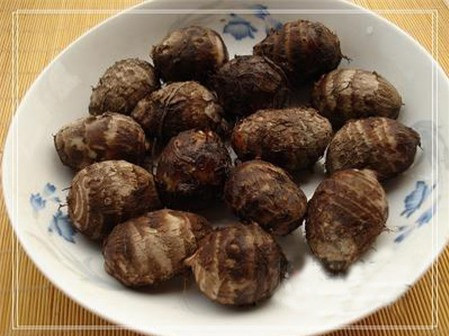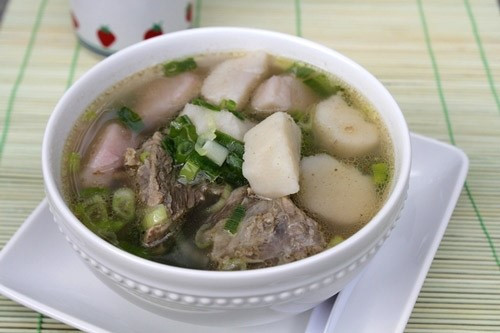Health benefits of taro
Taro contains a lot of starch, fiber, sugar, lipid, many amino acids and minerals (Ca, P, Fe) that are good for the body. Taro is considered one of the foods that are very good for human health.
Here are some health benefits of taro to our body.
Energy source
Taro root provides more calories than potatoes, about 100 grams provide 112 calories. The calories of taro come mainly from complex carbohydrates called amylose and amylopectin.
However, taro is lower in fat and higher in protein than cereals and legumes. The protein level in taro can be compared to other tropical food sources such as sweet potato, cassava... which can be an alternative energy source to rice food.
 |
| Taro is lower in fat and higher in protein than grains and beans. |
Good for digestion
Taro is one of the best sources of dietary fiber, about 100 grams of taro root provides 4.1 grams or 11% of the daily fiber requirement. Along with fiber, complex carbohydrates slow down digestion and the fiber in them also helps to gradually increase blood sugar levels.
For a healthy heart
Taro also provides several important minerals such as zinc, magnesium, copper, iron, and manganese. Furthermore, it is high in potassium. Potassium is an important component of cell and body fluids that helps regulate heart rate.
Helps stabilize blood pressure
In addition to being good for the heart, the potassium contained in taro is great for helping to stabilize and reduce blood pressure, especially for those with high blood pressure.
Laxative, anti-constipation
People with frequent constipation can lead to hemorrhoids, to prevent and treat constipation should use taro. Taro contains fiber and starch grains to help digestion. Can use boiled taro to eat or cook soup. If boiled, should wash the taro and boil with the skin then peel to eat, will reduce itching and the taro will be drier than peeling the skin and boiling.
 |
| Taro contains fiber and starch grains that aid digestion. |
Anti-asthenia
The daily energy requirement from carbohydrates should account for 60-70% of the total energy. The high carbohydrate content in taro helps provide energy, nourish nerve cells, and prevent physical weakness... Especially for thin people, those who have just recovered from illness or who often show signs of physical weakness, using taro soup cooked with pig's feet or using taro cooked with lean meat will help the body recover quickly.
Support for nephritis
The amount of fiber in taro is not too much, but also contains phosphorus, vitamins will be good conditions for people with nephritis. Can be used normally as cooking meat soup, spinach, but should add less spices than normal people. You can also use taro cooked with rice to make porridge, add a little sugar to prevent and support the treatment of chronic nephritis.
Boost the body's immune system
Taro root contains a lot of vitamin C and other antioxidants that are beneficial for maintaining the body's immune system. By eliminating free radicals, the body will stay alert and fight against many dangerous diseases.
 |
| Taro is one of the best sources of dietary fiber, about 100 grams of taro root provides 4.1 grams or 11% of daily fiber requirements. |
Anti-aging
The ability to deal with free radicals and regenerate cells when eating taro is excellent and is very important to maintain the elasticity of cells in the body, especially skin cells. It is very helpful in preventing premature aging.
A small note is that eating too much taro can cause symptoms of kidney stones and gout as well as other health complications if not prepared well, for example, you should boil taro before cooking soup or preparing other dishes, or soak it overnight before cooking, in order to reduce the amount of oxalate.
According to Zing
| RELATED NEWS |
|---|


